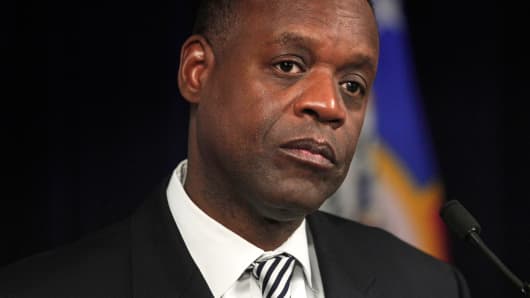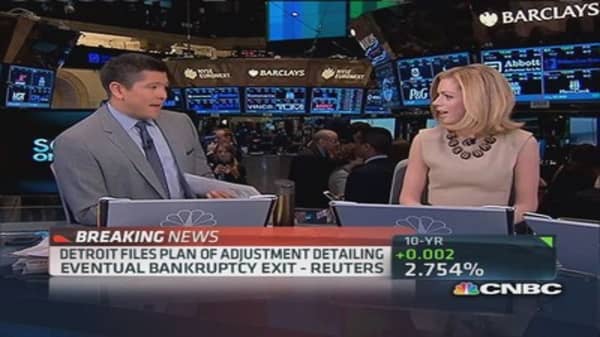But even before Orr had a chance to formally unveil it, the plan was under heavy attack from investors, unions representing city workers and other creditors. Their response indicates that the city's blueprint for recovery marks the start of the kind of litigious, acrimonious battle that Orr and other city officials are hoping to avoid.
Among those targeted in the 120-page "plan of adjustment" covering more than 100,000 creditors, the city's 24,000 retirees are among the most vocally opposed. Orr proposed 34 percent cuts to the pension checks of general city retirees and a 10 percent cut for police and fire retirees. Those cuts could be reduced if the city's two independent pension boards agree to the plan.
But the proposal drew little support from union leaders, including AFSCME Council 25 President Al Garrett, who called the plan "a gut punch to Detroit city workers and retirees."
"Retires cannot survive these huge cuts to the pensions they earned," he said in a statement. "The plan is unfair and unacceptable. We will continue our efforts in the courts and through negotiations."
Some bondholders would take an even bigger haircut, under the terms proposed Friday. While secured bondholders would get all of what they're owed, those holding unsecured, so-called general obligation bonds would get just 20 cents on the dollar.
(Read more: Detroit's next bankruptcy battle: Who foots the bill?)
Detroit bondholders may not be the only ones hurt by Orr's proposal. If the final plan pays Detroit investors less than 100 cents on the dollar, the impact could reverberate throughout the nearly $4 trillion municipal bond market, according to Robert Miller, who manages a municipal bond fund at Wells Fargo.
"You would have introduced a level of risk to a class of bonds that is not priced into the market," he said. "No matter how remote that risk may be, it is nevertheless present and investors will demand (higher interest rates) for assuming the risk."
Investors directly in the line of fire made clear Friday they were braced for a legal battle. Financial Guaranty Insurance Co. and Syncora, two companies that insure Detroit's general obligation bonds, were quick to denounce the plan. Together, they represent the second-largest class of creditors after retirees.
"While we understand that favoring pensioners and discriminating against bondholders and other creditors might be politically popular, we believe this is contrary to bankruptcy law and will result in costly litigation that will hamper the City's emergence from bankruptcy," said Steve Spencer, a financial advisor to FGIC, in a statement. "This will restrict the city's ability to fund the reinvestment essential to its revitalization."
That revitalization is a major goal of Orr's plan, which calls for spending more than $500 million for blight removal and investing another $1 billion to improve city services.
(Read more: Thinning blue line: Police cuts cripple cities)
"There are 700,000 residents who deserve an adequate level of services," said Orr.
But until the city can stabilize its finances, those residents continue to suffer. Some 20 percent of the city's housing stock is blighted or abandoned. Arson and other fires at those abandoned buildings produce 60 percent of calls to the Fire Department.
With the city's health-care resource in decline, some two-thirds of emergency medical services calls are for non-urgent treatment unavailable elsewhere, Orr told reporters.
The city's plan also includes $350 million in new borrowing to help pay for operating expenses. But that deal was contingent on the city terminating a series of money-losing interest rate swaps with UBS and Merrill Lynch.
A deal to pay off those swaps was rejected twice by U.S. Bankruptcy Judge Steven Rhodes as too generous. A third agreement has been reached in principal and details are expected to be made public next week.





